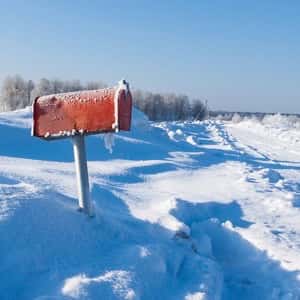
I admit that I am an old-fashioned guy. I like personal contact with real people. Nothing drives me crazier than an automated phone tree. You know what I mean. You try to reach customer service and are told to start pushing numbers on your phone. You have to keep pushing buttons to get to the right department. Eventually you are put on hold for what can be an indecent amount of time. If you are lucky, you might finally talk to a human being who may, or may not, be able to help you. I feel much the same way about talking face-to-face with a pharmacist vs. a mail-order pharmacist. This reader shares our concerns.
Trying to Reach a Mail-Order Pharmacist:
Q. You’ve written that you should talk to the pharmacist about your prescriptions to avoid errors. How can I do that when my insurance company pushes me to use mail order?
I don’t have any clue who the mail-order pharmacist is, or even what state he is in. When I sent a letter asking how to take my meds, I got no answer.
When I fill a prescription for my cat, I can actually see the pharmacist filling it and can ask to speak to them if I need to. Seems like my cat gets better access to a pharmacist than I do.
A. Mail-order pharmacies should provide a phone number you can call to talk with a pharmacist. You should not be put on hold for long periods of time and your specific questions should be addressed. If the label does not provide instructions about how to take your medicine, the phone call should resolve your concerns.
Drug Side Effects?
Ask about common drug side effects. Specifically, ask the pharmacist what percentage of patients experienced those side effects in the clinical trials required for FDA approval. Do not settle for simple answers that do not provide meaningful information.
If the medicine causes dry mouth in 38% of patients, that is a pretty high risk. If the drug causes headache in 1.2% of patients, you probably don’t have to worry. You deserve that kind of specific information.
Also inquire about drug interactions. Find out whether any of your other medicines, vitamins or dietary supplements could pose a problem with the mail-order medicine.
You can always verify you have received the right medicine by looking at the photos found in the pill identifier section of websites like www.drugs.com. This is a good suggestion regardless of where you obtain your medications.
Complaints About Mail-Order Pharmacist Communication:
Mail order pharmacies are big business. That’s because employers, insurers and pharmacy benefits managers often favor mail-order pharmacy services. They like to say that mail order is “cost effective.” What they mean is that they can save money if you utilize the mail order pharmacy over a local pharmacy.
Patients are told that mail-order pharmacies are “convenient.” No more driving across town or waiting in line at the counter. What they don’t tell you is that there may be questions about shipping medicine via the U.S. postal service or some other delivery company. Here are some articles we have written on this topic:
Insider Blows Whistle on Mail Order Med Deliveries
Mail order med deliveries may sit in a cold or hot mailbox for hours. That’s not good. But have you thought about shipping conditions even before that?
How Safe Are Mail-Order Medicines If Not Temperature Controlled?
How were your medications shipped from India to America? How did they get to your pharmacy or your doorstep? Is anyone in charge of mail-order medicines?
Ask the Mail-Order Pharmacist This Question:
Next time you receive a medicine in the mail and wonder about temperature control, call the mail-order pharmacist and ask the following question:
What are the FDA-mandated storage and shipping conditions for my medicine?
If the mail-order pharmacist acts surprised at your question and doesn’t have a ready answer, suggest that she check the official prescribing information. Most medicines are to be stored “at room temperature between 68°F and 77°F (20°C and 25°C); excursions permitted from 59°F to 86°F (15°C to 30°C).” Ask the pharmacist what the FDA means by “excursions.”
We sometimes see the agency state:
“short-term excursions outside the label storage conditions (such as might occur during shipping)”
Ask the pharmacist whether that means hours or days. If you don’t get a clear answer or are not satisfied, suggest that the mail-order pharmacist check the USP (United States Pharmacopeia) description of “excursions.”
Companies are allowed short-term violations of the specified storage temperature during shipping and distribution. In most cases the time limit is 24 hours and the deviations (excursions) from the standard temperature are specified. In the words of USP:
“Transient spikes up to 25° (77° F) may be permitted if the manufacturer so instructs and provided that such spikes do not exceed 24 hours unless supported by stability data or the manufacturer instructs otherwise.”
During the summer we doubt that many delivery vehicles keep the temperature under 77 degrees F. And in the winter, many states may have daytime temperatures below freezing. That is not permitted under the USP requirements. Please let us know how the mail-order pharmacist responds to your questions.
Share your own experience with mail-order pharmacies in the comment section below.

